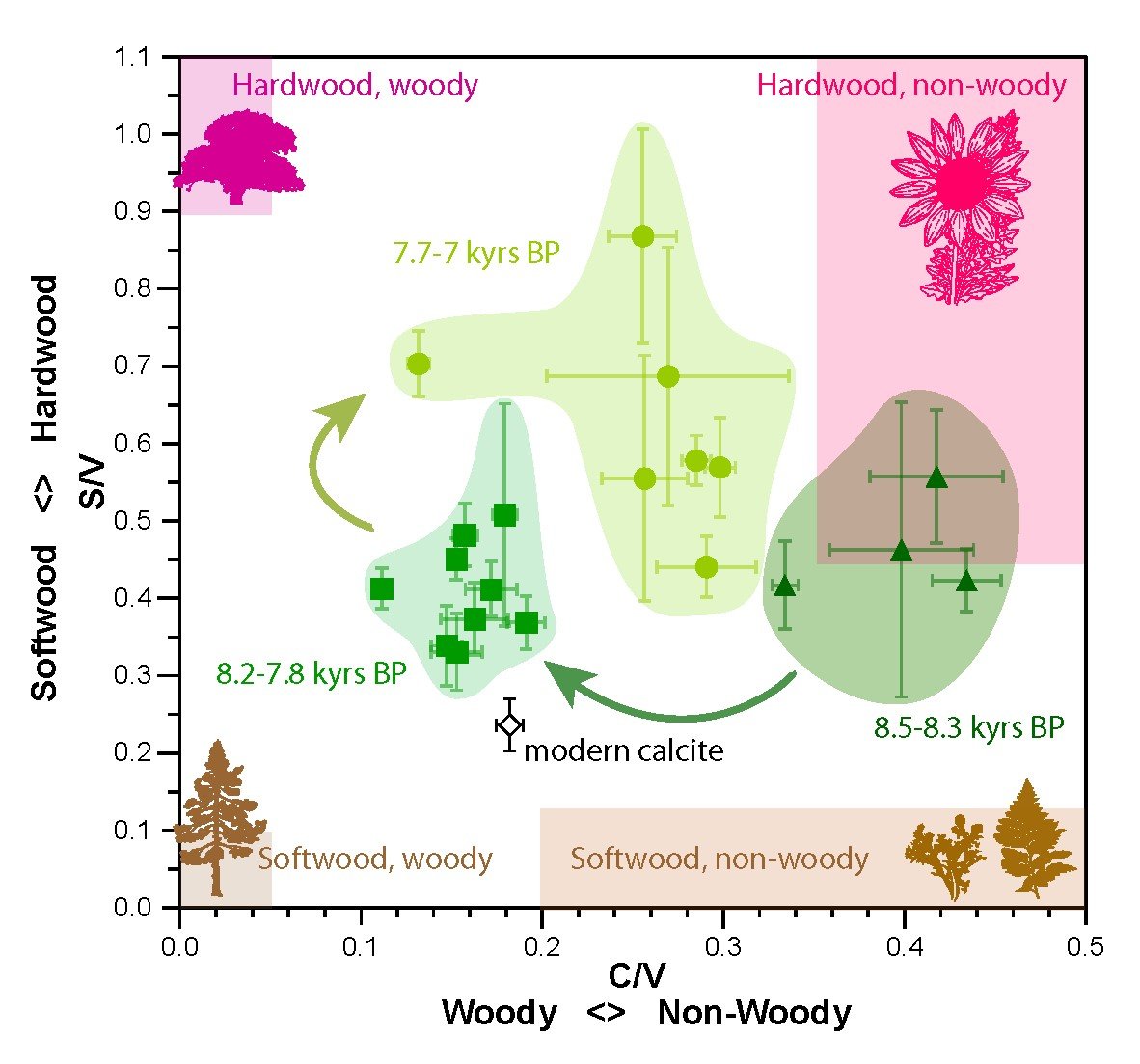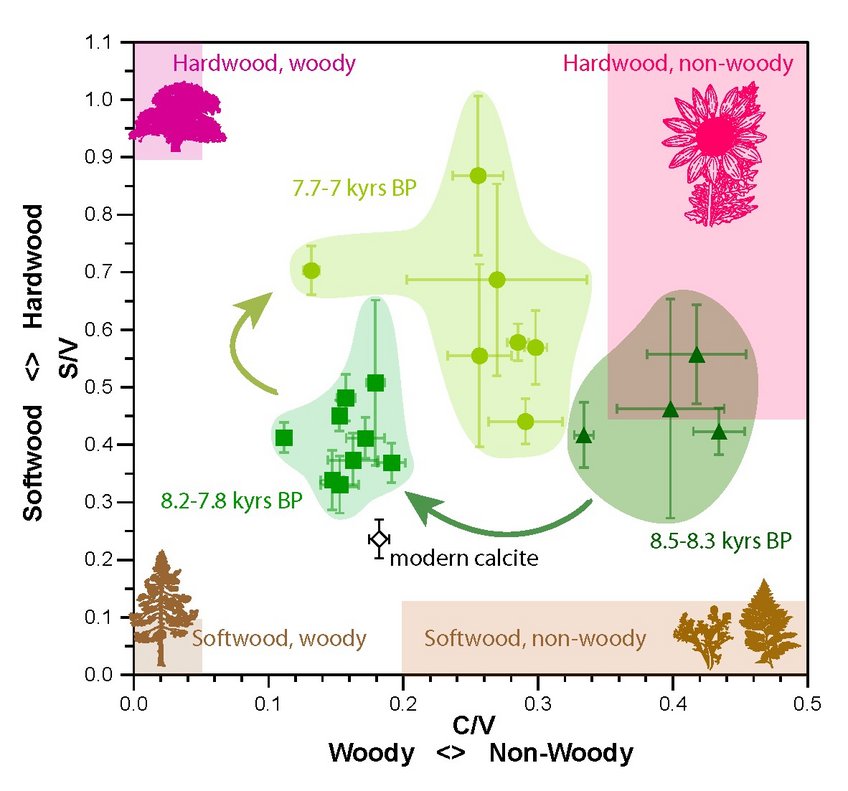Linked fire activity and climate whiplash in California during the early Holocene
Climate change and its effects on our seasons, water balance, vegetation, and soils are already being clearly felt. For example, the number and intensity of wildfires in semi-arid regions such as western North America already exceed historical records. High-resolution paleoclimate archives such as stalagmites could illuminate the link between hydroclimate, vegetation change, and fire activity in pre-anthropogenic climate states beyond the timescale of existing tree-ring records. Using two novel markers, levoglucosan and lignin oxidation products (LOP), researchers from the Universities of Mainz, Nashville, and Northumbria have succeeded in reconstructing fire activity and vegetation composition in the California Coast Range during the 8.2-kiloyear event. This event was a cold phase lasting several hundred years, first detected in the Swiss Alps by pollen analytical studies and later in Greenland ice cores. Studies indicate that within this period, precipitation also varied much more than usual in western North America. These wild variations are symptomatic of a phenomenon called climate whiplash. Our findings show elevated levoglucosan concentrations that suggest increased fire activity while altered LOP compositions indicate a shift toward more woody vegetation during the event. These changes are concurrent with increased hydroclimate volatility as shown by carbon and calcium isotope proxies. Together, these records suggest that climate whiplash and fire activity in California, both projected to increase with anthropogenic climate change, were tightly coupled during the early Holocene.

